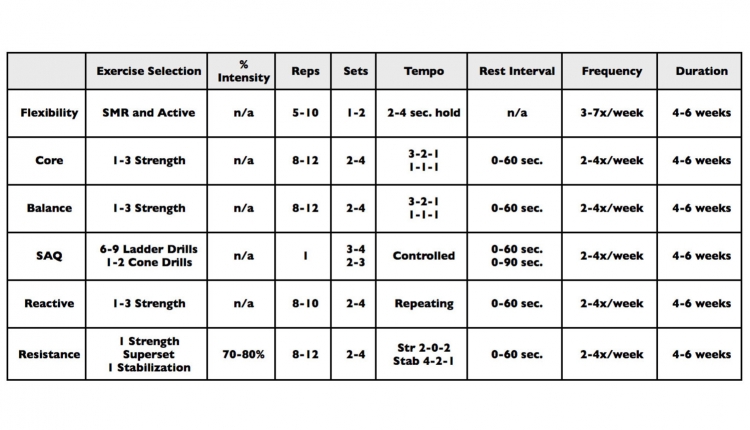If your clients are anything like mine they are inquisitive and ask a ton of questions. This, of course, is a good thing because it shows they are engaged in their own training (if you aren’t a parent yet, enjoy the free training your clients will provide that will prepare you for the terrific twos and tremendous threes!)
Each question asked provides us with an exciting teaching opportunity. Presently, one of the most often asked questions is: "What is this MET term I keep seeing displayed on the treadmill and elliptical screens?" A well-educated fitness trainer should not only be very familiar with Metabolic Equivalent of Task, but also be able to explain this term to their clients in such a way that the client can take home a tasty bite of information to add to their growing buffet of knowledge from their sessions with you.
For those who are unfamiliar with the term, it can most easily be described as an energy cost index which relates to the intensity of exercise activity. It goes far beyond the idea of burning calories through activity. Using MET measurements is similar to using an RPE (rate of perceived exertion) scale, or using a heart rate monitor to calculate heart rate levels. It provides a more personalized measurement for each client resulting in a clearer understanding of just what level of intensity each client needs to attain to achieve and sustain the desired effects of physical exertion. It is important to consider three questions: (1) How do I define MET training to my clients?; (2) How do I typically incorporate this into my client's training sessions?; (3) Who is my target audience? I will answer these questions for you and give you suggestions for application that will make your small group and one-on-one training sessions hotter than ever by getting your clients more engaged and excited about their results.
We know that when energy is expended oxygen is consumed. In its most basic definition, one MET is equal to the amount of oxygen consumed or energy expended while at rest for one minute. MET values range from .9 for sleeping to 24 for full exertion such as with a marathon runner. The three basic measurement brackets are defined as Light (.9-3), Moderate (4-6), and Vigorous (>6). Consider that an average healthy, but non-athletic middle-aged man or woman have peak exercise capabilities ranging from 8-10 MET, while their active and trained counterparts, i.e. marathon runners, have a range of 18-24 MET. Another way to explain MET would be say that a person walking at a pace of three miles/hour is exercising at a 3.5 MET value and someone jogging at a pace of five miles/hour is exercising at an 8 MET value. To help a client better understand how this directly applies to them, you could explain that if they are exercising at an 8 MET value, they are exerting eight times more energy than if they were sitting still in a chair.
Once you explain the basic information, it's guaranteed that your clients will want to know the answer to these next questions: "What is the right MET value for me?" and "How do I know when my intensity is enough?" The answer to the first question is that an appropriate MET value is similar to an individual's age adjusted maximal heart rate and is calculated simply as follows: for women, MET value = 14.7 - (.13 x Age) and for men, MET value = 14.7 - (.11 x Age). For instance, a 43 year old woman should be able to achieve a MET value of 9.11 based on the formula: (14.7 - (.13 x 43 or 5.59) = 9.11 MET. Similarly, a 43 year old male should achieve a MET value of 9.97 (14.7 - (.11 x 43 or 4.73) = 9.97 MET. A rating of Good is achieved when the client achieves 100% or more of the predicted MET value and a rating of O.K. is used when the client achieves 85% to 99% of the predicted MET value. Any value below 85% indicates that improvement is needed.
The second question is answered more subjectively: when you get the results that align with your fitness goals you will know your intensity is high enough. A different question is usually asked at this point: "How do I raise my MET value so I can achieve greater results?" This answer is relatively easy and does not require math skills. To raise your MET value you must challenge your body through regular physical activity that is more intense that what you are doing now. Involving larger muscle groups will result in a higher MET value demand. Any increase in exercise intensity and duration will improve your MET value and enable you to see and feel results more quickly. I recommend to my clients to strive for 30-45 minutes at a 4-6 MET value most days of the week using a training ratio of 1:3, which translates to 30 seconds at a Vigorous level followed by 90 seconds at a Moderate level throughout the duration of the training session.
I have answered the What and How questions, which leaves only the Who question. The short answer is: all "apparently" healthy and orthopedically sound individuals in all age demographics. This is a beautiful answer because as fitness professionals, we have the skill set and knowledge to meet our clients right where they are today. We can start them at their individual level of health and fitness, then progress them using systematic programming as far as they are willing to go. By learning what our client's starting MET value is and what their individual goals are, we are well on our way to ensuring their success. I do want to emphasize that being orthopedically sound and having the ability to move correctly will be a benefit. However, that is not to say that if a person cannot run, jump or bound they are not a candidate for MET training.
There are many low-to-no-impact body weight exercises that will use large muscle groups and increase heart rate. Consider training with forced reps, which is the training method that uses manual resistance provided by the trainer. Also, consider body weight training, i.e., segmented burpies, split stance T,Y,V,L drills and the many variations of plank exercises.
Valorie Ness is CEO of Catalyst Fitness Midtown located in Atlanta, Georgia. She has been in the industry for over 15 years and travels nationally and internationally as an educator and presenter. Valorie is the 2013 PFP Trainer of the Year, master trainer for ACE, Red Cord and Catalyst Fitness.www.catalystfitness.com













